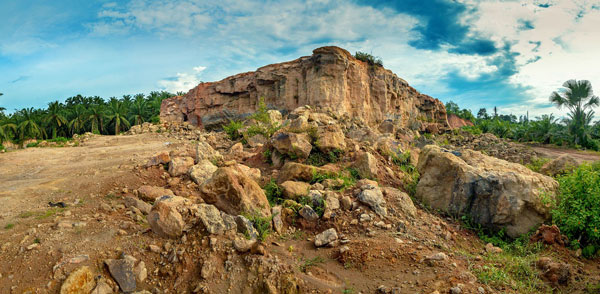Extensive landslides happen in the Enga region of Papua New Guinea

[Landslide. Photo Credit to Pixabay]
On May 24th, a deadly landslide struck the mountainous Enga region in Papua New Guinea, burying around 2,000 people alive.
More than 7,000 people had to evacuate due to this incident, and victims buried under the ground still haven't been rescued, even though more than three days have passed since it happened.
The landslide has imperiled the lives of the 3,800 residents living in the area, with many families facing the tragic loss of loved ones.
Evit Kambu, a local villager, reported that 18 members of her family are buried under the debris and soil.
Despite the attempts to rescue the survivors, they were hindered by rubble 10 meters deep, which blocked access to the limited equipment available.
Kaokalam village, the most severely affected area, is still waiting for a substantial rescue operation.
Currently, there is no large-scale rescue efforts are underway, and as a result, desperate villagers are digging with shovels.
The community is urgently calling for government support, yet the bodies remain uncovered.
According to Justine McMahon, the country coordinator of Care Australia, one of the humanitarian aid agencies, any attempt for rescue would be dangerous, as there’s a risk of further landslides as the ground is quite unstable at the moment.
In fact, the landslide has also had a significant impact on the economic lifeline in the country.
The Enga region is a crucial area for agriculture and mining, both of which are vital to Papua New Guinea’s economy.
The destruction of farmlands and mining infrastructure has halted production, leading to potential shortages and financial losses.
In response, the head of Papua New Guinea, King Charles III of Britain, along with the Queen, has expressed his condolences.
He hoped for the rapid recovery of this accident and had said, “I have faith that your communities will come together to support the survivors and the recovery in these heartbreaking circumstances.”
Extensive landslides happen more frequently due to factors such as climate change.
They often follow other natural disasters like earthquakes and heavy rains, which destabilize the ground.
While no clear evidence links recent earthquakes to the landslide in Enga, the need for preventive measures is evident, especially in the mountainous regions of Papua New Guinea.
Preventing large-scale landslides is challenging and often costly.
Engineering solutions such as building retaining walls can reduce the risk by stabilizing slopes.
Geologists and geotechnical engineers also play a crucial role in predicting the scale of potential landslides, which can help in preparing and preventing such tragedies.
As the community deals with the aftermath of the disaster, effective and immediate action is needed to prevent further loss and ensure the safety of those in vulnerable areas.

- Dongha Kim / Grade 11
- Branksome Hall Asia

![THE HERALD STUDENT REPORTERS [US]](/assets/images/logo_student_us.png)
![THE HERALD STUDENT REPORTERS [Canada]](/assets/images/logo_student_ca.png)
